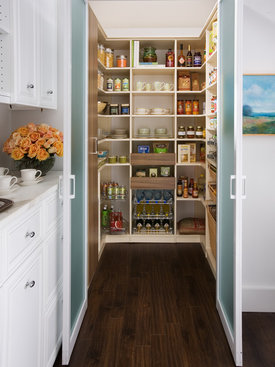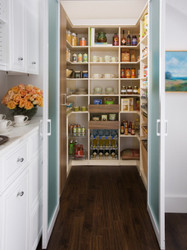6 Tips for Cleaning Out Your Pantry
Posted by Simple Girl on 16th Aug 2016

Three half-eaten bags of potato chips that taste like cardboard, two open boxes of Cream of Wheat left over from when your kids still lived at home, a pile of ramen noodle packages that feel like they got run over by a big truck, two sticky, half-empty bottles of syrup stuck to the shelf, and three jars of peanut butter in various stages of consumption. And what's this? Peaches in heavy syrup? Where did that come from? Your family despises canned peaches as much as they despise cranberry sauce, which is why you're confounded by the two cans of such that must be leftover from Thanksgiving 2004, when your dear old cranberry sauce-lovin' grandpa was still earthbound.
Sound like your pantry? Then it's time to beat that mess into submission.
- Two words: Food Bank. Something about a sale somehow convinces us that we should stock up on an item, even if it's something nobody really eats. Like that 50-cent can of sauerkraut, those four boxes of Grape Nuts, and all eight cans of low-sodium vegetable soup that you picked up for cheap even though no one in your family likes vegetable soup. Go through your pantry, and stuff into a bag anything you know you're not going to eat in the next few months, and take the bag to the food bank.
- Watch expiration dates carefully. Most people will readily throw out items that already are expired, but when you give your pantry a deep cleaning, think ahead a few months. If it's January and you only use pumpkin pie filling in November, but your can expires in April, donate it.
- Create easy-to-understand pantry sections. One reason a pantry becomes such a jumbled mess is that like items aren't kept together. If you have a bag of pasta on the bottom shelf, two more behind the boxes of cereal on the second shelf, and a few more scattered among the crock pot and blender components on the top shelf, you'll probably end up buying more because you have no idea whether you're out. Designate pantry sections for your canned goods, boxed goods, jarred goods, bottled goods, and bagged goods. Keep the older items in front of newer like items, and keep all of the labels facing outward so you can see at a glance what you've got before you head to the grocery store.
- Invest in some nice airtight containers. Airtight see-through containers save you money and cut down on food waste. They'll keep your cereal from getting stale when someone doesn't close the package properly, and they'll protect your flour and sugar from bugs. Plus, you can see through them, which is nice, since someone tends to put empty packages back in the pantry because the recycling bin is all the way across the kitchen, and who has time to walk an empty Vanilla Wafers box all the way over there?
- Pay attention to both the size and the frequency with which you use items. Keep smaller items in front of the big ones so you don't have to play hide-and-seek every time you're ready to cook. Keep the items you use most often on the middle shelf so they're at eye level and easy to reach. Stick the rarely-used items on the top shelf, but make sure you can see them so you don't double up by accident.
- Stay on it. Once you get your pantry organized, keep it that way. Each time you remove something; do a quick tidying up of the stuff around it. Badger your family constantly until they learn to put things back in their designated section. Threaten to slap a padlock on the door if you have to! When it's time to shop for groceries, go through the pantry and check expiration dates. Toss out the old stuff. When you put the new groceries away, put the new box of cereal or jar of peanut butter behind the old one, and don't open it until the old one is used up and its container is tossed in the recycling bin.
There is a place for everything, so get everything in its place!

